
What if your child’s doodles were actually a window into their soul? Prepare to be amazed as we reveal how simple sketches can uncover a treasure trove of insights about your little one’s unique view of the world.
Have you ever closely looked at the scribbles and doodles on your child’s drawing pad? It turns out, these seemingly random strokes can offer a fascinating glimpse into their inner world.
One popular psychological tool is the “House-Person-Tree” drawing test, where children are asked to draw these three objects.
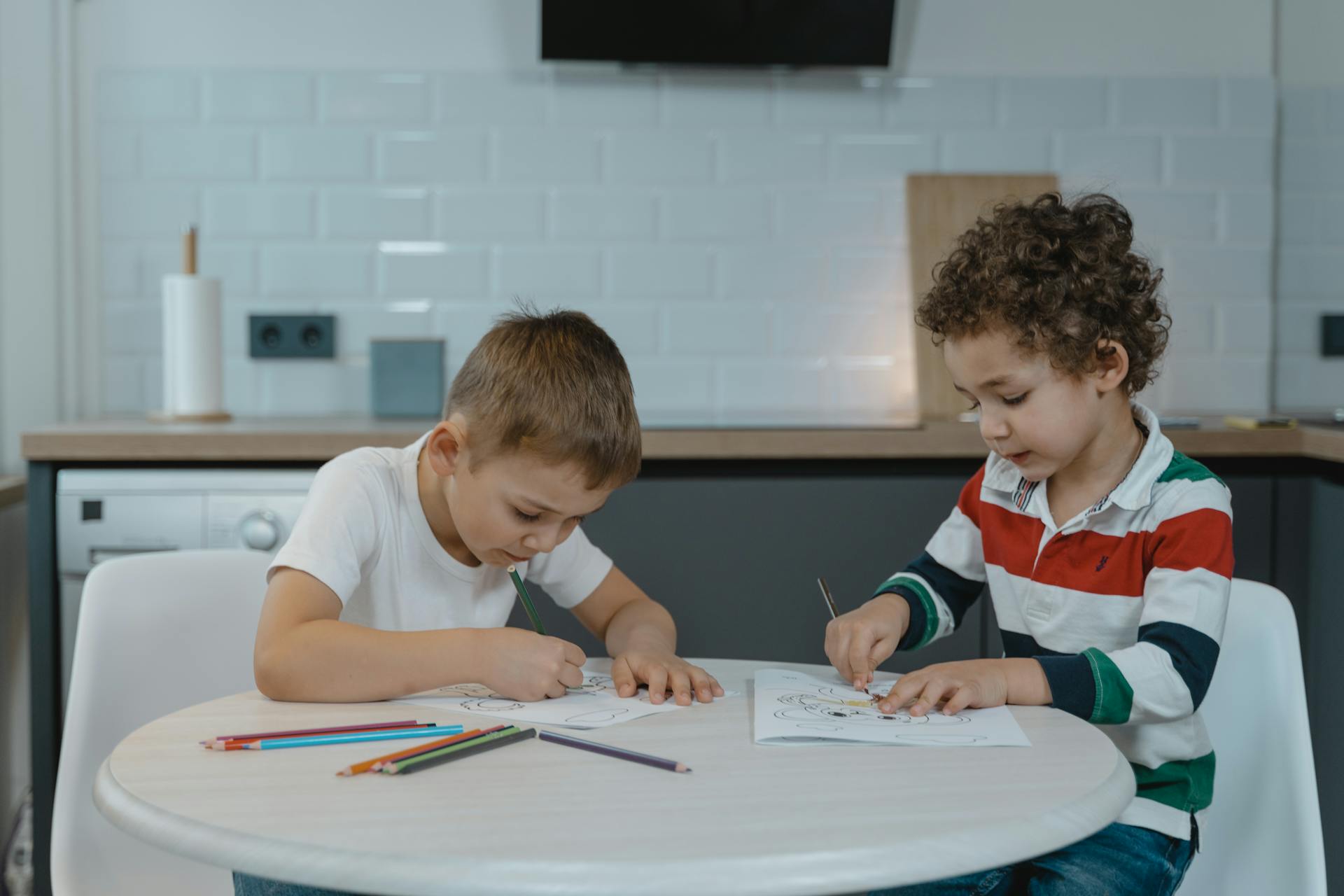
Children drawing on paper | Source: Pexels
By analyzing the details of their drawings, you can gain valuable insights into their emotions, self-esteem, and even their relationships with others.
Imagine being able to understand your child’s fears, hopes, and dreams just by looking at how they draw a tree or the size of the chimney on their house. As a parent, this knowledge is like having a secret superpower because it allows you to connect with your little one on a whole new level.

A woman hugging her daughter | Source: Pexels
But that’s not all! This test isn’t just about uncovering hidden meanings. It’s also a fantastic opportunity to open up conversations about feelings, spark creativity, and reassure your child that you’re always there to listen and support them.
So, let’s explore the fascinating world of child psychology through the lens of their artwork.
1. Preparing for the Drawing Personality Test
Step #1: Setting the Stage
First things first, you must create a calm, cozy corner for your budding artist.

A table with art supplies in a child’s room | Source: Midjourney
Think of it as preparing a mini studio where creativity can flow freely. Choose a quiet spot away from distractions including smartphones, tablets, and TV. You need to provide your child with a peaceful space where their imagination can take center stage.
Step #2: Gathering the Tools
Then, gather your child’s favorite art supplies. Whether it’s those much-loved crayons, trusty colored pencils, or vibrant markers, make sure you have a rainbow of options ready for them.
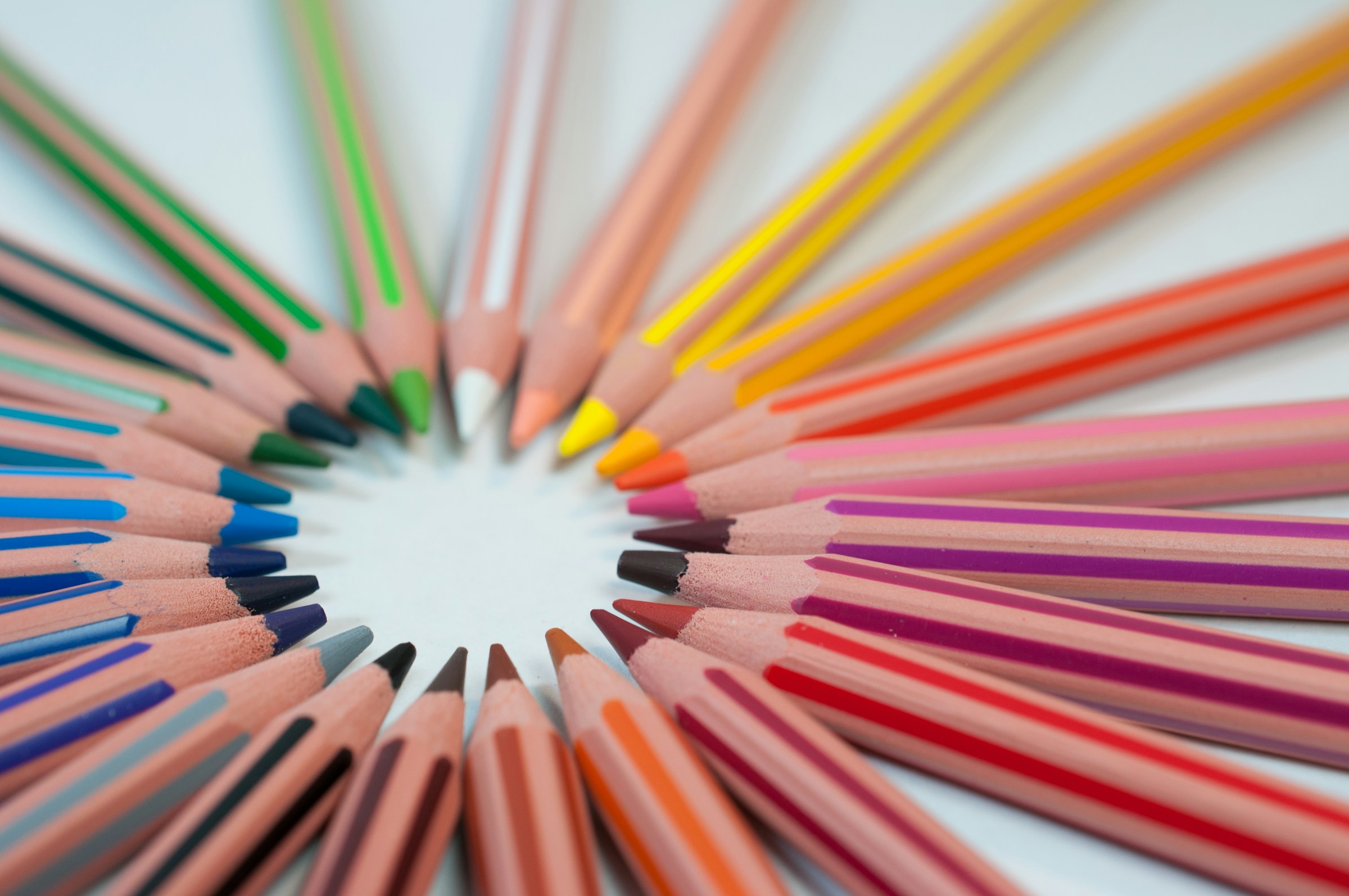
Color pencils | Source: Unsplash
Don’t forget a crisp sheet of paper (or three, if you prefer). You have two options:
- The Three-Canvas Approach: Give your child a separate sheet for each masterpiece. One for the house, one for the tree, and one for the person.
- The All-in-One Gallery: Opt for a single sheet where all three creations can coexist in harmony.
Step #3: The Magic Formula

A child sitting with art supplies | Source: Midjourney
Once the supplies are ready, it’s time to tell your child what they’re supposed to do.
- Ask your child to draw a house.
- Then, request a tree.
- Finally, have them sketch a person.
Remember, we’re not aiming for the next Picasso here. Encourage your child to draw however they like. They can even opt for stick figures!
The beauty is in the details and the story they tell, not in artistic perfection.
Step #4: The Time Limit

A woman pointing at a clock in her hand | Source: Freepik
The next step is to set a gentle time limit for the test. About 10 minutes per object should be fine, but you can increase it by a few minutes if you think your little one needs more time. This keeps things fun and spontaneous without feeling rushed.
Here’s the golden rule: Resist the urge to help or guide their drawings. This is their moment to express themselves freely. Your job is to be the supportive audience, not the art director.
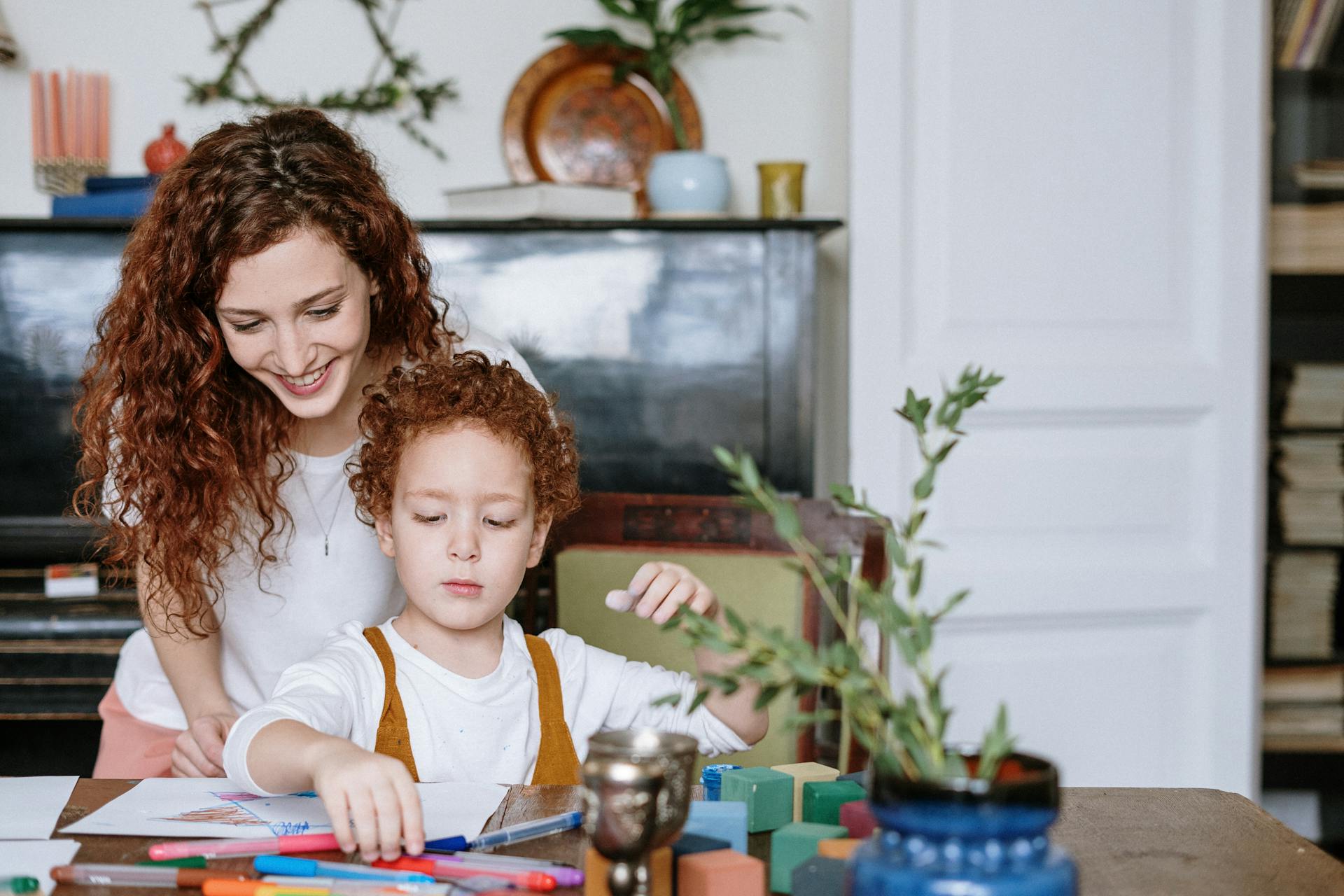
A woman watching her child draw | Source: Pexels
Pro tip: Make it a fun, relaxed activity. You could even join in and do your own drawings alongside them (on a separate paper, of course). This can help your child feel more at ease and enjoy the process.
2. Evaluating the Results
Once the masterpieces are complete, it’s time for you to put on your detective hat. Take a close, curious look at what you see.
Be cautious! If the house does not have any doors, it means that they might want you to speak to them more often.
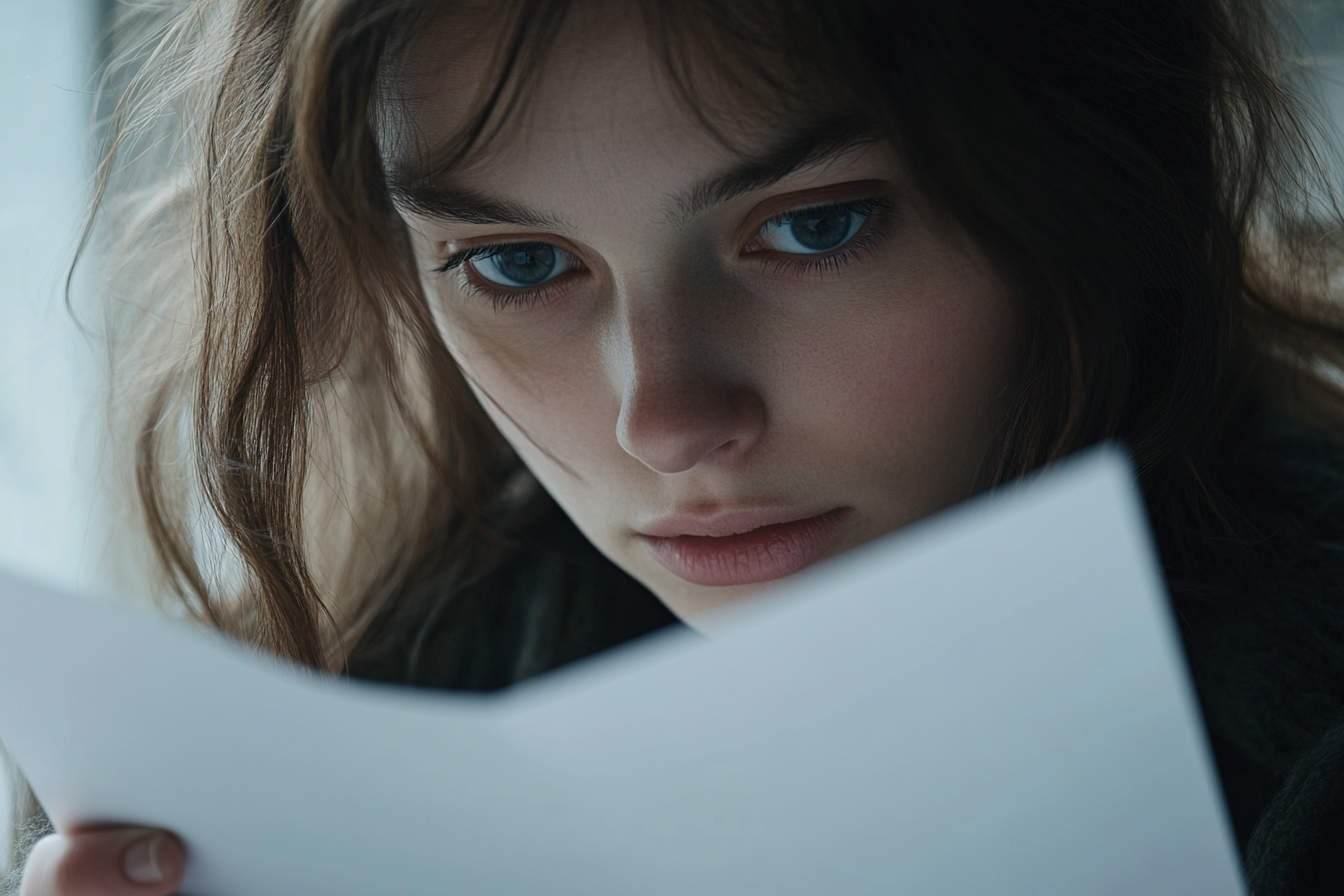
A woman looking at a paper | Source: Midjourney
Want to find out more? Let’s evaluate each object one by one.
1. The House: Home Sweet Home?
Imagine the house as a storybook about your family life. What tale is your child telling?
- Size Matters: Is the house too big? Or does it look like a cozy cottage? A large house often indicates feelings of security and pride in family life. Meanwhile, a smaller dwelling might suggest your child feels overlooked or insecure at home. If the house isn’t too big, it might be time for some extra cuddles and a heart-to-heart conversation.
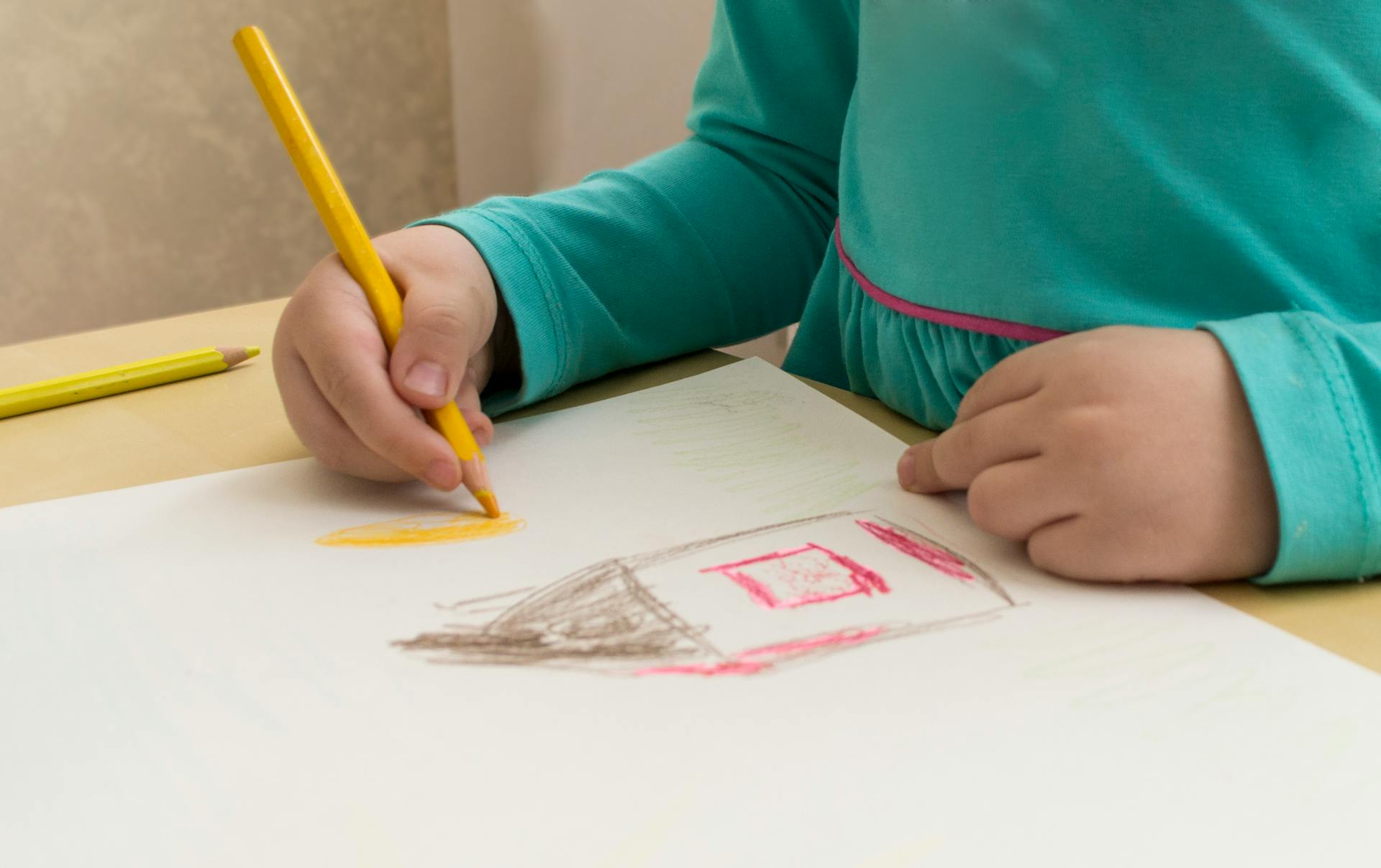
A child drawing a house | Source: Pexels
- Windows to the Soul: Large, open windows can represent openness and good communication at home. Smaller or closed windows might indicate a desire for privacy or difficulty expressing feelings. They can tell if your child is craving a little more family time.
- Door Dilemma: A big, welcoming door suggests your child sees home as an open, inviting place. No door? They might be feeling a bit shut out. Why not plan a special “just us” day?

A drawing of a house | Source: Midjourney
- Roof and Chimney Chronicles: Do you see a well-drawn roof with a smoking chimney? It means your child probably feels protected and is happy to have you around. If the roof seems flimsy or if the house doesn’t have a roof, that might suggest vulnerability. They might need some extra reassurance of your love and protection.
2. The Tree: Rooted in Feelings
The tree is a symbol of your child’s emotional world and growth. Let’s see what each element of the tree suggests about your child’s personality.

A drawing of a Christmas tree | Source: Pexels
- Trunk Talk: A sturdy trunk suggests inner strength. A thin one? Your child might need some emotional nourishment. How about sharing some stories of when you overcame challenges?
- Branch Bonanza: Did your child draw lots of healthy branches spreading wide? It means your child is curious and eager to explore new things. You might want to keep them entertained with new science experiments or an interesting book they’ve never read before. Similarly, sparse or drooping branches might indicate sadness or lack of energy. It may suggest your little one might need a bit of encouragement.

A sketch of a tree with lots of branches | Source: Midjourney
- Leaf Life: A tree full of green leaves might symbolize happiness and personal growth. It may suggest your little one feels blessed to have you as their parent because you’ve been supporting them in every way possible. However, don’t be too worried if you see bare branches. It might just be a phase where your child isn’t feeling happy. All you need to do is talk to them about it and ensure they’re honest while sharing their thoughts.

A drawing of a tree with green leaves | Source: Midjourney
- Root Revelations: Visible roots often indicate a sense of stability and strong connections. Meanwhile, absent roots might suggest feeling ungrounded. If you don’t see any roots, it might be a good idea to establish comforting routines and traditions to help your child feel more secure and connected to their environment.
3. The Person: Mirror, Mirror on the Wall
This figure is like a magical mirror, reflecting how your child sees themselves or someone important to them.

A girl looking at herself in the mirror | Source: Pexels
- Size and Space: Did your child draw a big, center-stage figure? Such figures often indicate confidence and self-assurance. Your little one might be feeling content and happy about themself. However, if your child drew a smaller figure or if they drew it at the corner of the sheet, then it might suggest low self-esteem. Boost your child’s confidence with praise and activities that showcase their strengths.
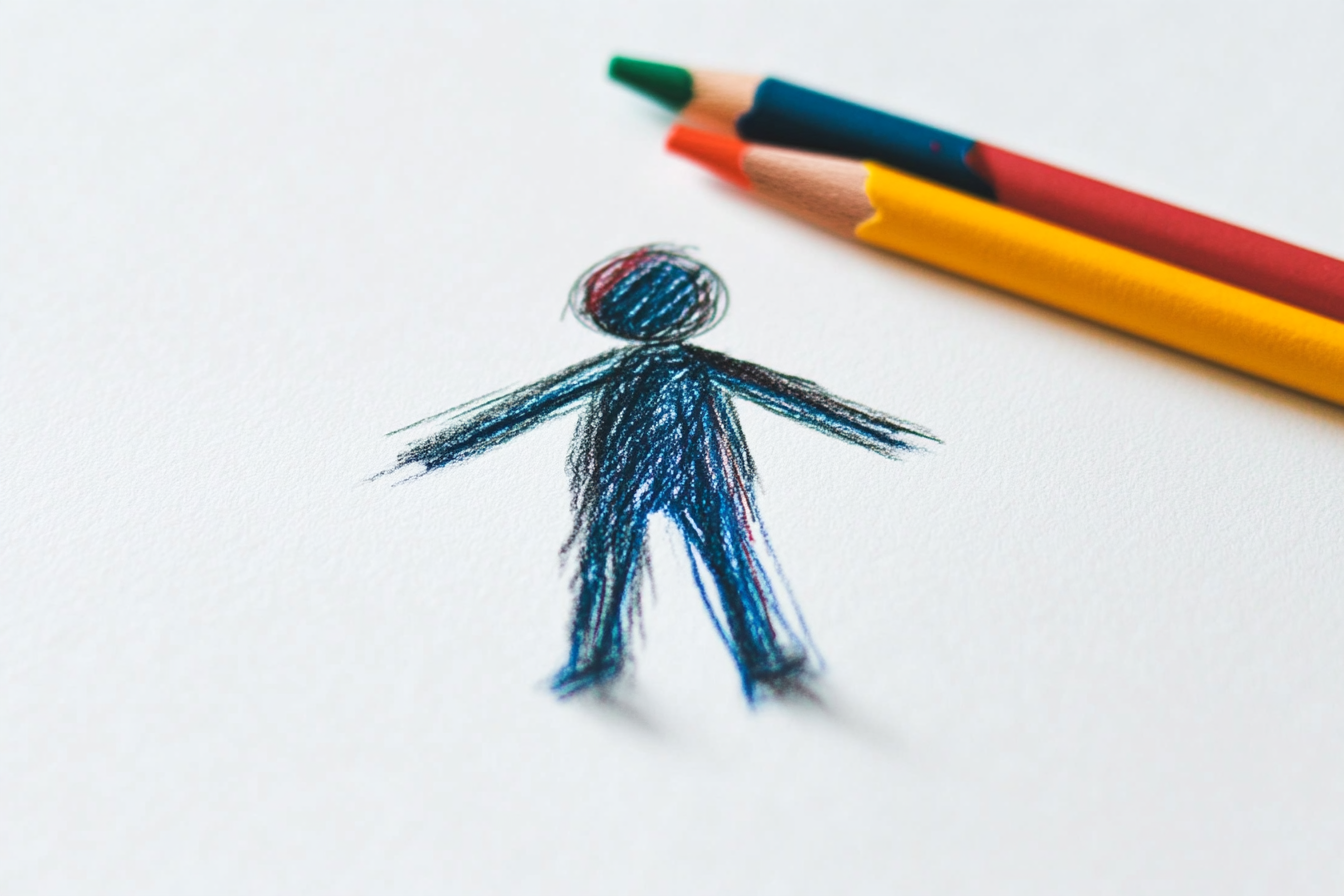
A sketch of a person | Source: Midjourney
- Face First: What does the person’s face look like? If it has clear, expressive features, it might indicate your child is comfortable showing their emotions. Meanwhile, a lack of detail might suggest difficulty expressing feelings. They might need help putting their feelings into words.
- Arm Adventures: Extended arms often signify a desire for connection or a sense of capability. It could mean your child feels good about themselves. Arms close to the body might indicate shyness or insecurity. You might want to encourage social interactions and provide opportunities for your child to develop new skills.

A woman talking to her daughter in a park | Source: Pexels
- Handy Info: Detailed hands show your child feels ready to tackle anything. No hands? They might need a reminder of how capable they are.
- Fashion Forward: If the person your child drew is wearing a flashy outfit with lots of details, it might suggest your little one is very aware of how others see them. While it’s not bad, you still might need to find out why they’re thinking that way to ensure it’s not something negative.

A woman talking to her daughter on the bed | Source: Pexels
The Big Picture: Putting It All Together
Now, step back and look at the whole masterpiece. How do all these elements interact? Do they suggest your child is happy? Or are they hinting at a desire for more connection?
Remember, this isn’t about right or wrong. It’s about understanding and connecting. If anything in the drawing concerns you, use it as a springboard for gentle, open conversations.

A child’s drawing | Source: Midjourney
“I love how you drew our house. Can you tell me more about it?” can open up wonderful dialogues.
Every child is unique, and so is every drawing. The most important thing is to use this as a fun way to bond with your child and show them how much you care about their thoughts and feelings.
So, grab a snack, sit down with your little artist, and let the conversation flow. Who knows what amazing discoveries you’ll make together!

A woman hugging her daughter | Source: Pexels




Leave a Reply